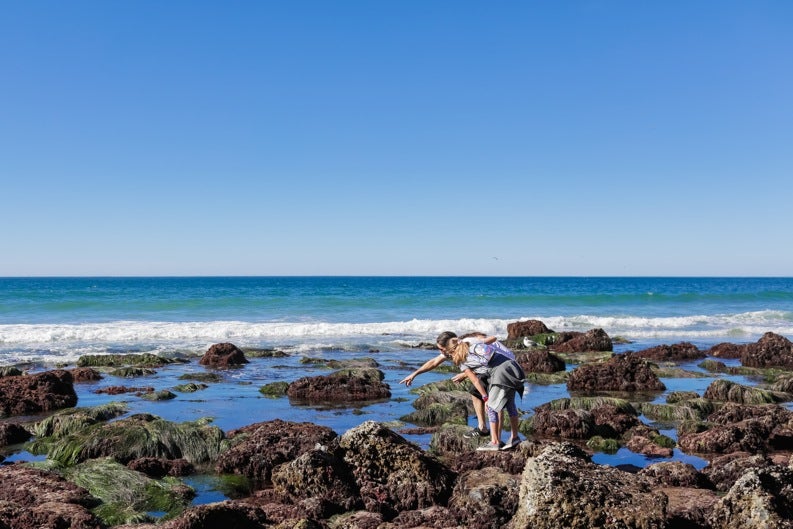How to Tidepool with Your Kids

'Lisa Jhung'
Whether you’re visiting a beach on spring break, making summer plans, or live near the coast, tidepooling can be a great family activity. Poking around rocky formations on the beach at low tide is like visiting a natural aquarium, as sea life like anemones, crabs and even octopuses hang out in pools until the tide comes back in to reconnect them with the ocean.
“Tidepooling is a really magical activity,” says Danny Beckwith, the manager of public engagement with La Jolla, California’s Birch Aquarium at Scripps, a world-renowned facility tied to the Scripps Institute of Oceanography at the University of California San Diego. “It’s such a neat way for a family or group of people to enter nature.” Tidepools are the interface between water and land, and while there are lots of different sea creatures to be found in tidepools, spotting something as common as a hermit crab can be exhilarating.
“There’s something for everyone in tidepooling,” adds Beckwith, “and tidepools around the world reveal different sea life because water temperature, rock types, and proximity to human areas all change what we see.” Here is Beckwith’s advice for making the most of a tidepooling experience with your family:
1. Wait for low tide. Check tide charts (found in printed booklets in beach communities, or online) to see when the tide will be low. “During high tide, there might not be any rocks visible,” says Beckwith. But the low tide will reveal flat rocks that might usually be underwater. “What’s happening during low tide, is that the water’s being pulled back into the ocean. Animals get stuck in the pools; they’re used to it. That time is a chance for humans to see the animals that live in those habitats.”
2. Wear proper footwear. Because of sharp, loose, and slippery rocks, flip flops and bare feet should be avoided. “We recommend water shoes with grip on the bottom,” says Beckwith. Closed-toed shoes like sneakers work too, but know that worn-out soles can be slippery.
3. Step carefully. Be aware of slick, sharp, or loose rocks along the shore. “If the rock is black, brown or green, it probably means the rock is slippery,” says Beckwith. To minimize potential for falling due to a loose rock, teach your kids how to do a quick test by tapping a rock with their toe to see if it wobbles or not before firmly stepping on it with their full weight. Other safety precautions include walking with your hands in front of you in case you fall and instructing kids to crawl over rocks that are especially uneven.
4. Observe and conserve. It’s important for kids and adults alike to remember that tidepools are a wildlife habitat, and that stepping into them disrupts whatever’s living there. “We all love to interact with animals, but some are sensitive, or fragile. Anytime you’re disturbing the water, you’re disturbing the animals,” says Beckwith. While Birch Aquarium has a manmade tidepool where visitors can touch anemones, sea stars, sea cucumbers and urchins with the help of volunteers, Beckwith advises that interactions with wild sea life in natural tidepools are best without touching, unless you’re 100% sure it’s safe for both of you, and the sea creature (a barnacle on a rock, for instance, is safe to touch).
Beckwith advises enjoying the tidepools by observing, and know that patience is your best tool. “The longer you look, the more you’ll see,” he says.
5. Take only memories. Though it may be tempting to take a souvenir like a cool rock or shell, it’s important to leave everything as you found it. Just like while hiking in the mountains, the best practice is to both leave only footprints and take only memories, and to pack out everything you brought in. And if you move or turn over rocks within a tidepool, keep in mind that you may have moved a creature’s habitat. “Be sure to return the rock to how you found it,” says Beckwith.